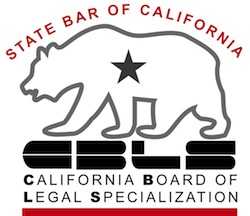
Getting a bankruptcy discharge is what almost all cases are about. So the question of whether or not you’ll get a discharge looms large in Chapter 7.
The short answer is that if you are eligible for a discharge, you’re almost certain to get a discharge. Eligibility, in this context, looks at whether you’ve gotten a previous bankruptcy discharge within certain time periods: 8 years if you previously got a Chapter 7 discharge; 6 years if you got a Chapter 13 discharge. See 11 USC 727(a)(8).
The longer answer looks at the list of behaviors that might bar you from a discharge. I see these as conduct that “mucks with the bankruptcy system” . Disqualifying behavior includes lying on the schedules; hiding assets; disobeying court orders; or failure to have appropriate books and records.
This is conduct that messes with creditors as a whole or disrespects the bankruptcy system.
How does a judge decide if you get a discharge
Lots of bankruptcy debtors image that the judge considers how they got into debt and how they are fixed to deal with that debt in deciding if they get a discharge. Not so.
Again, the short answer is that the judge doesn’t decide. Or rather, the judge gets involved only if some one challenges your right to a discharge, within the prescribed window of time. The assumption is that unless someone objects and proves their case, you get a discharge.
That window is small, typically 60 days after the date set for the first meeting of creditors. Let the time expire and challengers are out of luck.
An entity contesting your right to a discharge has the burden of bringing the adversary proceeding and convincing the judge that the facts support denial of discharge. The presumption is that you get a discharge.
In the real world, challenges to the discharge are relatively rare.
Discharge contrasted with non-dischargeability
A successful suit to deny a debtor a discharge is markedly different than a suit to find a debt non-dischargeable. Denial of discharge makes all of the debts of the filer survive the bankruptcy case. The remedy doesn’t just benefit the entity that brought the challenge. Rather it preserves the enforceablility of all of the debtor’s debts going forward.
A nondischargeability action, by contrast, affects only the debt of the person who brings the challenge. The debtor may get a discharge of all of his other debts, but, if successful, the debt in question will live on past the bankruptcy case.
The unspoken requirements to get a discharge
We’ve talked about overt challenges to getting a discharge. There’s another way to lose out on the discharge, one that is absolutely in the debtor’s control. It’s the post filing debtor education requirement.
Since 2005, a debtor gets a discharge only if they complete a debtor education class before the expiration of the time to challenge the discharge. The class is really a single, hourlong excercise that walks individuals through some money management basics. It’s available online or over the phone.
The debtor education requirement is so easy, but every year, a slice of debtors don’t get it done timely or fail to provide the court with proof they’ve done it. If proof of taking the class isn’t filed, the court will close the case without a discharge.
All is not lost, however. A case can be reopened to file the debtor education certificate, and a discharge will result. It does require an other filing fee and most likely, the help of an attorney to make it happen.
Discharge in sight
So, don’t fret about getting the discharge. If you’ve dealt honestly with your creditors and with the bankruptcy system (and you get your debtor education class), you’ll get your Chapter 7 discharge months after filing, without fuss or bother.
More
When it’s not enough to be honest
Understand the bankruptcy schedules
Questions to ask a bankruptcy lawyer





